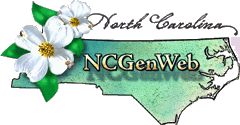North Carolina Through Four Centuries,
by William S. Powell
Scots-Irish & German History
The following information is quoted directly from NORTH CAROLINA THROUGH FOUR CENTURIES, by William S. Powell, published by the University of North Carolina Press, Chapel Hill, NC, copyright 1989 by the University of North Carolina Press, used by written permission of the publisher.
We wish to express our grateful appreciation to UNC Press for allowing us to post this material for use by genealogists in their own private research. This book is also listed on the “Research & Resource Books” page linked to the index page, and may be purchased through various book sellers.
Scots-Irish
While the Highlanders were moving up the Cape Fear River, two other bands of people were entering the province. Though coming from the same place and along the same road, these two groups were quite different and, once settled, remained apart. One consisted of immigrants of Scottish-Irish descent while the other was made up of people of German origin. Both came almost exclusively from Pennsylvania and traveled down the Great Wagon Road through the Shenandoah Valley of Virginia. The people of both groups were mostly second- or third-generation “Americans.” Their parents or grandparents had arrived in Pennsylvania to take up land or to follow a trade. These young people found land there scarce just at the time North Carolina’s backcountry was beginning to be opened to settlement.
The so-called Scots-Irish (the term they prefer rather than the more common Scotch-Irish), or Ulster Scots, were descendants of the Scots who had been sent by English monarchs to Northern Ireland in the early seventeenth century to “civilize” the country, to supplant the unruly Irish, and to industrialize that part of the empire. There these people drained swamps, cleared fields, grew crops including flax, and raised cattle and sheep. They were Presbyterians who displaced many Roman Catholics, thereby accomplishing another English objective – to make the country Protestant. They also developed a thriving linen and woolen industry that began to compete with English mills. They might be said to have succeeded too well, and after a century English policy changed – these people were encouraged to leave Ireland for America. Queen Anne, granddaughter of Lord Proprietor Edward Hyde, helped to provide transportation to Philadelphia for many Scots-Irish.
On the way to the Carolina backcountry some of these people stopped off in the Valley of Virginia, but larger numbers continued into Piedmont North Carolina as well as into upcountry South Carolina. A few also arrived by sea, sailing down the coast to Charles Town and from there traveling inland. With friends and relatives in other colonies as well as up and down the frontier, in time they came to play an important role in uniting the colonies in a sentiment for independence. They came by this sentiment naturally as dissenters to the Anglican church, as a people who had no love for the English, and especially because their democratic church government gave them experience in managing their own affairs. Their religion encouraged them to read and interpret the Bible, and it was largely for this reason that they supported education. They were highly literate – even many women could read and write, which was uncommon at that time.
The Scots-Irish were self-reliant, industrious, unemotional, opinionated, and often considered to be bigoted, reserved, and cold, but they were loyal to friends and family. They made ideal settlers of the backcountry. They cleared land, built barns and houses (often in that order), and soon afterward established churches and schools. The period 1735-75 saw the arrival of most of the colony’s Scots-Irish settlers. They usually left their former homes in the fall as soon as crops were gathered and arrived in their new home, bringing food, livestock, equipment, and supplies, in time to acquire land, clear the trees, and be ready to plant with the coming of spring. Before long they also erected sawmills, gristmills, and tanneries.
During the American Revolution these people supplied large numbers of troops and a large proportion of high-ranking officers. Many also held office in the government as soon as English influence weakened.
Governor Arthur Dobbs, a Scots-Irishman himself, said that in one year 10,000 of his countrymen landed in Philadelphia; many of them traveled as far south as North Carolina before finding land to their liking and at a price they could afford. In a seven-year span, the legislature created five new counties to accommodate their numbers: Johnston and Granville (1746), Anson (1750), Orange (1752), and Rowan (1753). When Rowan was created, it already had at least 3,000 people; just ten years later Mecklenburg County was formed.
Germans
The other newcomers in the backcountry from Pennsylvania consisted of German Protestants, members of the Lutheran, German Reformed, and Moravian churches. They spoke German and many continued to do so until the 1840s, although the young people also spoke English. When asked by their English-speaking neighbors what kind of people they were, they replied “Deutsch” (German), and soon they were referred to as Pennsylvania Dutch, a term that their descendants revived during World War I when they wanted to deny their German background.
In central Europe several very cold winters and even some years “without a summer” killed vineyards and orchards, and drove farmers off the land. Many Germans went to Holland and eventually large numbers foudn their way to England. With Queen Anne’s assistance, some sailed with Christoph von Graffeinried’s colonists to New Bern while others went to Pennsylvania. There the population increased and available land became scarce, so, like the Scots-Irish, young people of German descent took the Great Wagon Road for Carolina. The first wave reached what is now Rowan County by 1747. A few Lutherans also settled as far east as modern Alamance, Guilford, and Orange counties, although the majority found land to their liking in the area now encompassing Cabarrus, Rowan, Stanly, Union, Mecklenburg, Lincoln, Davie, Davidson, Catawba, and Burke counties. The members of the German Reformed and Lutheran congregations scattered across the backcountry.
Like the Scots-Irish the Germans arrived in the fall and were well settled by spring. Lacking German-speaking pastors, they built schoolhouses and in them held Sunday services. Unlike their neighbors whose British surnames were familiar to county officials, the Germans had names that were difficult to spell and even more difficult to pronounce. Sometimes they translated them into English themselves: Zimmerman to Carpenter, Schneider to Taylor, and Klein to Small, Little, or Short, as well as to Cline. At other times a county official simply wrote the name as he heard it: Eckel became Eagle and Durr became Dry. When these German-speaking people owned slaves, the slaves also spoke German, a pecularity noted by outsiders passing through Salisbury. Even a printer in Salisbury offered pamphlets and almanacs in German.
During the American Revolution few people of German extraction held high positions in either civil or military affairs. The language barrier probably was a hindrance, but they certainly were not considered to be Loyalists. Perhaps the objectives of the war simply were not widely understood by this group.
PAGES 108 – 110 FROM CHAPTER ON “COLONIAL SOCIETY AND CULTURE, 1729 – 1776”
This information is made available strictly for private use and is not for republication in any form. The copyright is held by The University of North Carolina Press. This material is used by written permission from the publisher.



